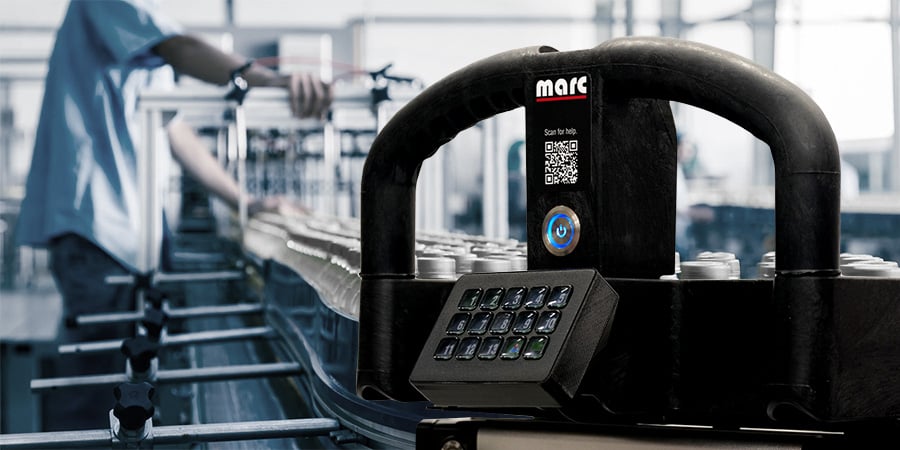
In the ever-evolving world of manufacturing, the spirit of continuous improvement is not just a philosophy—it’s a necessity. As companies strive to remain competitive, they are increasingly turning to a powerful combination: the time-tested principles of kaizen and the cutting-edge capabilities of automation. Recently, I had the privilege to observe this fusion firsthand during a kaizen event at a bustling manufacturing facility, where the introduction of MARC autonomous robotic carts became a game-changer.
Kaizen, a Japanese term meaning “change for better,” is a cornerstone of lean manufacturing. This approach focuses on small, incremental improvements involving everyone, from the shop floor to upper management. Kaizen events—intense, focused workshops—are designed to tackle specific challenges, streamline processes, and empower teams to make meaningful changes.
The impact of a well-executed kaizen event can be profound: reduced waste, improved quality, increased efficiency, and higher employee morale. But as manufacturing environments grow more complex, the tools available for driving improvement must evolve as well. That’s where automation enters the picture.
Manufacturing automation has long promised greater speed, consistency, and productivity. Robots, conveyors, and automated systems have become familiar sights in modern facilities. However, the true value of automation is realized when it is seamlessly integrated into lean initiatives—serving not as a replacement for human ingenuity, but as a powerful enabler of continuous improvement.
During this particular kaizen event, the team sought to address persistent bottlenecks in material handling. Manual cart movement, though seemingly straightforward, had become a source of inefficiency, wasted motion, and even safety concerns. The solution? Embrace automation in the form of MARC autonomous robotic carts.

MARC®—short for Mobile Automated Robotic Cart—is a state-of-the-art autonomous vehicle designed specifically for industrial environments. Unlike traditional automated guided vehicles (AGVs) that require tracks or magnetic strips, MARC uses advanced sensors, machine vision, and AI-powered navigation to move freely and safely throughout the facility.
MARC’s key features include:
The kaizen event began with a cross-functional team assembled to map out the current material flow. Using value stream mapping, the group tracked every movement involved in transporting components from receiving to assembly. It quickly became clear that manual cart pushing, though traditional, was riddled with inefficiencies:
Through the kaizen lens, the team saw an opportunity not just to automate, but to truly optimize.
The introduction of MARC carts was carefully planned as part of the kaizen event’s action plan. Here’s how the process unfolded:
To ensure a smooth transition, a pilot area was selected where material flow was especially problematic. Operators received hands-on training, learning to work alongside MARC. The operations team configured the carts to follow simple pickup and delivery routines, with the flexibility to expand as needed.
With MARC handling routine material transport, the team improved workflows around this new capability. Workstations were rearranged to accommodate automated delivery, and visual management tools were updated to reflect the new process.
A hallmark of kaizen is data-driven improvement. The team collected baseline metrics—cycle times, operator travel distance, and on-time deliveries—before and after introducing MARC. The improvements were striking:
Critical to the event’s success was the engagement of frontline employees. Rather than viewing MARC as a threat, operators embraced their new roles: programming carts, troubleshooting issues, and focusing on higher-value tasks. MARC carts are designed to increase adoption by being simple to operate and extremely approachable. MARC is designed to blend in to typical utility carts - with the added benefit that they drive themselves around.
The deployment of MARC autonomous carts did more than just streamline material handling. It sparked a cultural shift:
Most importantly, integrating MARC into the kaizen event demonstrated that automation and human creativity are not mutually exclusive. In fact, they are complementary. By leveraging robotic carts for repetitive, non-value-added tasks, skilled workers had more time and energy to focus on problem solving, quality improvements, and innovation.
A few key lessons emerged from this experience:
The success of MARC in this kaizen event has inspired other companies to explore automation opportunities. From inventory replenishment to finished goods transport, the possibilities are vast.
The integration of MARC autonomous robotic carts into a kaizen event offers a vivid illustration of how manufacturing can blend the best of tradition and technology. As facilities look to the future, the lesson is clear: automation, when implemented thoughtfully, is not about replacing people, but about empowering them.
As you continue to pursue excellence through continuous improvement, be sure to embrace innovations like MARC—not as the end of the kaizen spirit, but as its boldest evolution yet. The factory of tomorrow is taking shape today, and it is both automated and unmistakably human.
These Stories on Material Handling